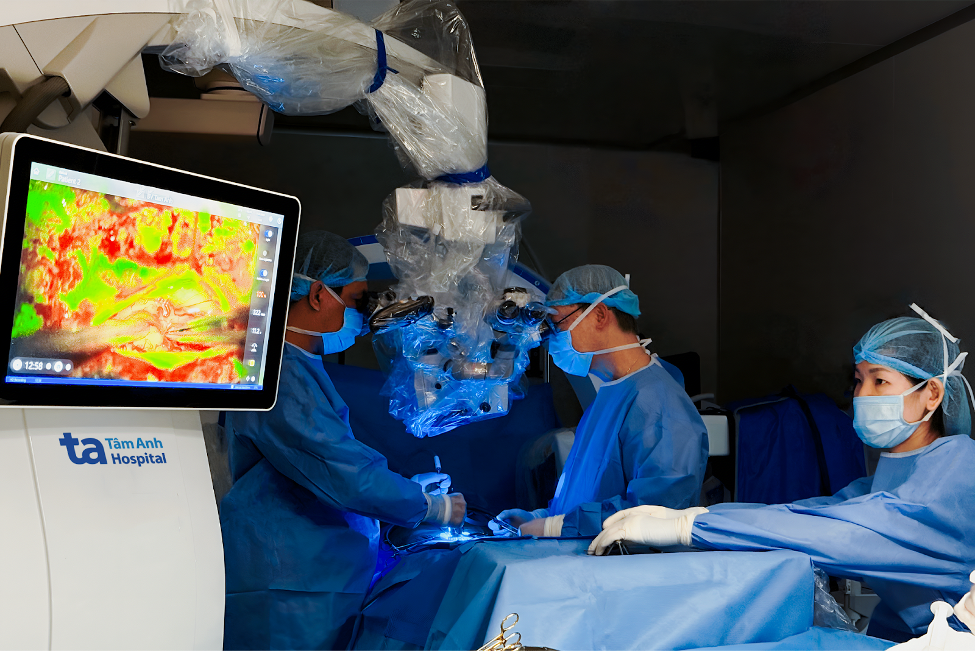When Anh lost feeling in her right leg, she sought treatment at a traditional medicine clinic and was diagnosed with a herniated disc. After 20 days of treatment, her pain temporarily subsided but then returned. She then went to Tam Anh General Hospital in TP HCM, experiencing difficulty walking and relying on a wheelchair. An MRI revealed a spinal cord tumor located in her thoracic spine, at the T12 level, measuring over 2 cm long and hemorrhaging. A diffusion tensor imaging (DTI) scan of her nerve fibers showed a disruption in the white matter tracts on the right side.
Dr. Chu Tan Si, Head of the Neurosurgery - Spine Department at the Neuroscience Center, explained that this is a Cavernoma, a rare type of vascular tumor in the spinal cord. Its weak vessel walls are prone to rupture, causing hemorrhaging and rapidly progressing symptoms. The tumor had ruptured and leaked, directly affecting the sensory nerve fibers.
Surgery was deemed necessary to preserve the remaining nerve function and prevent recurrent bleeding. Recurrent bleeding could lead to blood clot breakdown, releasing harmful chemicals that destroy the myelin sheath, causing nerve degeneration and irreversible paralysis. Despite its small size, the tumor's location in the narrow thoracic spine made surgery delicate, with a risk of spinal cord injury.
The surgical team meticulously removed Anh's tumor, minimizing invasiveness and preserving as much healthy nerve tissue as possible. Throughout the procedure, intraoperative neuromonitoring (IONM) continuously recorded signals from electrodes placed on her hands, feet, and head. Any contact or encroachment upon nerve fibers by surgical instruments would trigger a signal change, alerting the surgeon to adjust and reduce the risk of permanent damage.
 |
Dr. Tan Si and the surgical team remove the spinal cord tumor. Photo: Tam Anh General Hospital |
Dr. Tan Si and the surgical team remove the spinal cord tumor. Photo: Tam Anh General Hospital
Post-surgery, the tumor was completely removed without further damage to the spinal cord. A day later, Anh could stand and walk short distances, free from the burning, tingling, and sharp pain she had previously experienced. Her leg strength was almost fully restored, and she was discharged after 5 days. She continues with rehabilitation exercises and regular follow-up appointments.
 |
A nurse cares for Anh, checking her IV line after surgery. Photo: Tam Anh General Hospital |
A nurse cares for Anh, checking her IV line after surgery. Photo: Tam Anh General Hospital
The pathology report confirmed the diagnosis of a Cavernoma, which accounts for less than 1% of spinal cord pathologies and 5-12% of vascular lesions in the spinal cord overall. Cavernomas tend to progress rapidly and can be mistaken for other conditions. If you experience symptoms such as back pain, numbness, or weakness in the extremities, especially if they progress rapidly, it's crucial to seek neurological consultation and imaging tests for prompt diagnosis and treatment to avoid complications.
Phuong Thy
| Readers can submit questions about neurological conditions here for expert answers. |












